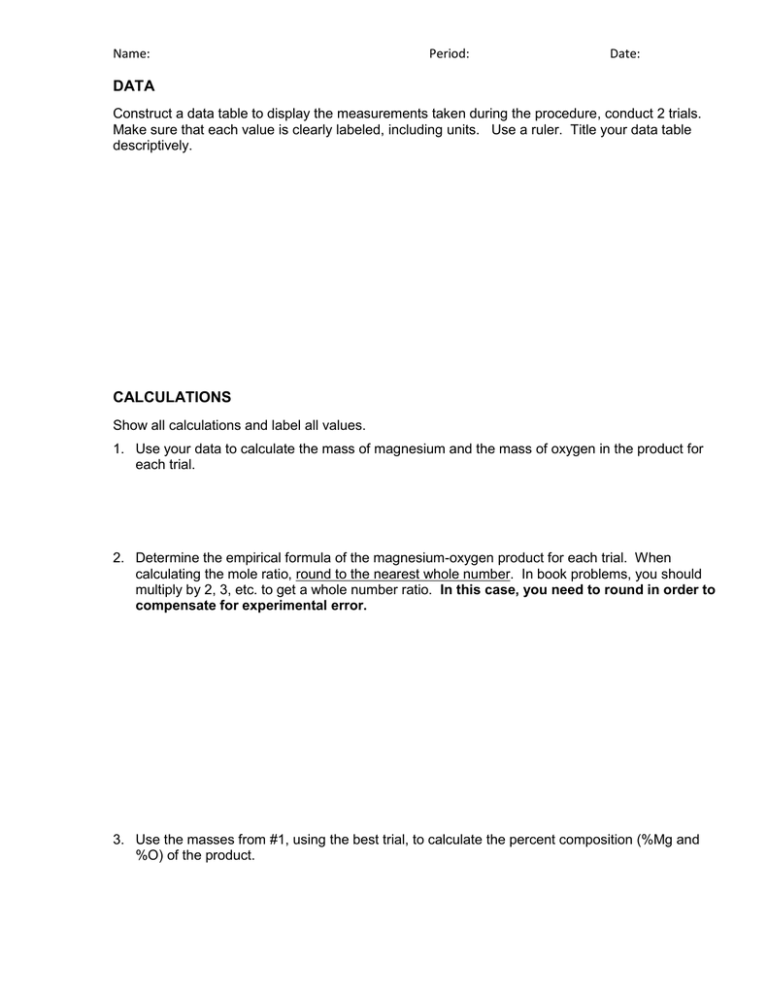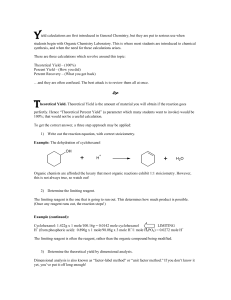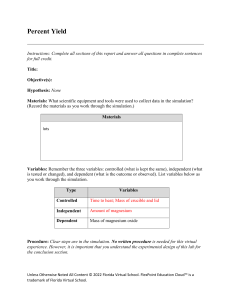DATA
advertisement

Name: Period: Date: DATA Construct a data table to display the measurements taken during the procedure, conduct 2 trials. Make sure that each value is clearly labeled, including units. Use a ruler. Title your data table descriptively. CALCULATIONS Show all calculations and label all values. 1. Use your data to calculate the mass of magnesium and the mass of oxygen in the product for each trial. 2. Determine the empirical formula of the magnesium-oxygen product for each trial. When calculating the mole ratio, round to the nearest whole number. In book problems, you should multiply by 2, 3, etc. to get a whole number ratio. In this case, you need to round in order to compensate for experimental error. 3. Use the masses from #1, using the best trial, to calculate the percent composition (%Mg and %O) of the product. 4. The literature value for the %Mg in this magnesium-oxygen compound is 60.3%. Use this value to calculate the percent error of your experimental %Mg. 5. Using your data calculate the theoretical yield for your magnesium-oxygen product, using the mass of magnesium ribbon you originally used. 6. Using your data and the answer to number 5, calculate the actual yield and % yield for your product. Your grade will equal your calculated percent yield*15Supporting calculations must be given or a grade of 0 CONCLUSIONS Write a conclusion based on your data. QUESTIONS: Write this in complete sentences. 1. Is your %Mg value too large or too small? 2. What experimental errors (determinate or indeterminate) might specifically account for this type of deviation? (This requires some in-depth analysis of how errors in your original data would affect your final answer, causing it to be too large or too small. It often helps to work backwards through your calculations. Then, you need to think about what might have happened during the experiment to create these errors.



